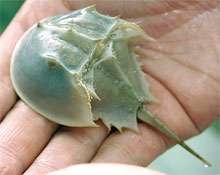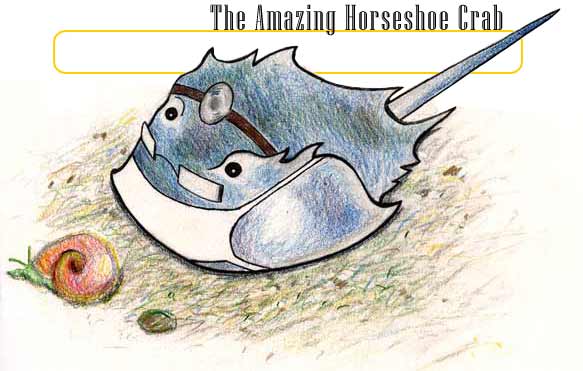|
How have these creatures survived virtually unchanged for so remarkably long? At some point, Mother Nature must have said, "if it ain't broke, don't fix it." Horseshoe crabs have hard, curved shells which make it difficult for predators to reach their soft, vulnerable bellies. They can survive a year without eating, live through extreme temperatures, and flourish in surprisingly salty waters.
 These hardy relics from the past most likely evolved from ancient sea scorpions so long ago that that their chemistry differs from that of all other modern organisms. These hardy relics from the past most likely evolved from ancient sea scorpions so long ago that that their chemistry differs from that of all other modern organisms.
While many animals use iron to transport oxygen through their blood, horseshoe crabs use copper to transport oxygen. As you can see from many aging statues, when copper oxidizes (is exposed to oxygen), it turns blue!
The horseshoe crab's blue blood plays a crucial role in modern medicine today. An ingredient in the blood, Limulus Amebocyte Lysate (LAL), is used in a standard test for toxins in medicines. No other chemical can detect these toxins so effectively as LAL, and researchers do not know how to make it in the lab. The FDA estimates that 260,000 horseshoe crabs were caught and bled for the medical industry in 1997 alone! A single horseshoe crab can be worth $2,500 over its lifetime for periodically drawing its blood for LAL.
Because horseshoe crabs are so crucial, scientists are worried that declines in their population will harm the medical industry! |

